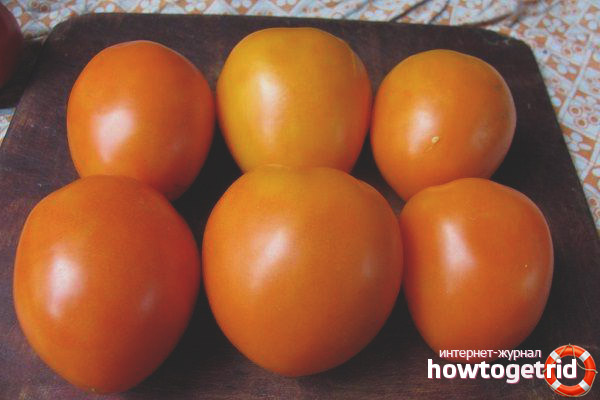The content of the article
The appearance of new varieties of tomatoes is still of great interest to gardeners and summer residents who grow various crops for the family, and to entrepreneurs who have a vegetable business. Of course, not all new products can catch on. However, when a new variety with the sonorous name Golden Eggs has recently appeared, everyone who has already received these fruits took its true value, appreciating their unpretentiousness during the growth period and increased yield, and then tasted it.
Siberian breeders bred this variety in order to have tasty tomatoes on people's tables in colder climates. Therefore, Golden Eggs are practically not afraid of frosts, they grow well on open ground, but nevertheless it is preferable to grow these tomatoes for large gathering in greenhouse conditions, especially since they are very compactly placed on a garden bed with a high yield. As shown by the practice of growing, in greenhouse conditions, the stems grow very intensively, and it is necessary to tie them up.
Grade description
The determinant bush of the Golden Eggs variety is stunted, its growth is limited to 4-6 brushes. Typically, a flower brush begins to form on a 5-6 leaf, and then through two inflorescences.
The height of the bush of this variety is not more than 50 cm. The leaves are medium in size, have a simple inflorescence. Fruits among other tomatoes can be distinguished immediately, as they have an oblong shape, very reminiscent of an egg. Their color is from saturated orange to yellow. The weight of tomatoes ranges from 80 to 200 gr. The peel of the Golden Egg is glossy and thin, but is surprisingly strong. The pulp is fleshy, its taste is sweet, but a slight acidity is felt. The variety is characterized by a large amount of solids. When cut, 6 to 12 nests are inside.
Productivity is high. Usually 10 to 15 fruits are removed from the bush. Germination is quite early - about 120 days.
How the variety gained popularity
During growth, you do not have to use any special methods to maintain the plants - they are not capricious during this period, besides, they are not afraid of the cold and lack of bright sunlight, and their immunity to fungal diseases is very high.
By the way, this variety is famous not only in Russia, but also abroad, it is also grown with pleasure, rejoicing in good crops. And before the Golden Eggs became available to everyone, their seeds passed a very stringent test, first in the laboratory, which was carried out directly by breeders, and then in a very picky State Seed Inspection.
The collected fruits tolerate transportation very well and remain of the same quality as after harvest. The peel does not crack due to its strength. The presentation of the fruit is preserved intact for two months, but they should be stored correctly, in closed containers at a certain temperature, pre-selected spoiled.
Growing a good harvest
Depending on the climate, the question is solved - in the open ground or still in the greenhouse to grow a variety of Golden Eggs. If the weather doesn’t really pamper you in your area, it is better to give preference to the greenhouse, the yield in it is usually higher.
If it is decided to plant using seeds, proceed as follows:
- Tomato seeds are best disinfected with a 1 percent solution of potassium permanganate.
- Rinse thoroughly in running water.
- Leave soaked for 8 - 12 hours. Use either water or special growth stimulants, which are sold in specialized stores.
It is advisable to place seeds in open ground in the middle / end of March, when the soil is warmed up to 8 - 10 degrees, the depth of the hole should be no more than 4 cm. The land, of course, must be prepared, that is, freed from weed grass, harrowed. Holes are made in rows, the distance between them is 25-30 cm. Several seeds are lowered into the ground at once, and if everything sprouts, they leave the most powerful stem, the rest are carefully cut. Seed germination depends on the temperature of the soil, so the sprouts can appear in different ways: from 12 to 20 days. All tomatoes love top dressing, they do it like this: 15 gr. ammonium nitrate take 10 liters of water and mix. Such a solution is poured precisely under the bush.
The variety differs in that most often you do not need a garter, but if the bush has grown by 60 cm, it is still better to tie it up. No need for pinching. All care is that regular watering, removal of weeds and top dressing of the soil with the help of fertilizers is provided. Experienced gardeners with great experience are advised to use potassium sulfate, superphosphate or aged manure as top dressing. Harvesting takes place in August.
Disease resistance
The Golden Egg variety resists many diseases thanks to a strong immune system. It is not subject to attack by such misfortunes as brown spotting and tobacco mosaic. However, one should check to see if gray rot has appeared on the plant. If - yes, then fungicide and triazole will help get rid of it. In case of late blight, fungicide and table salt will benefit.
Video: an overview of the most popular varieties of tomatoes











Submit